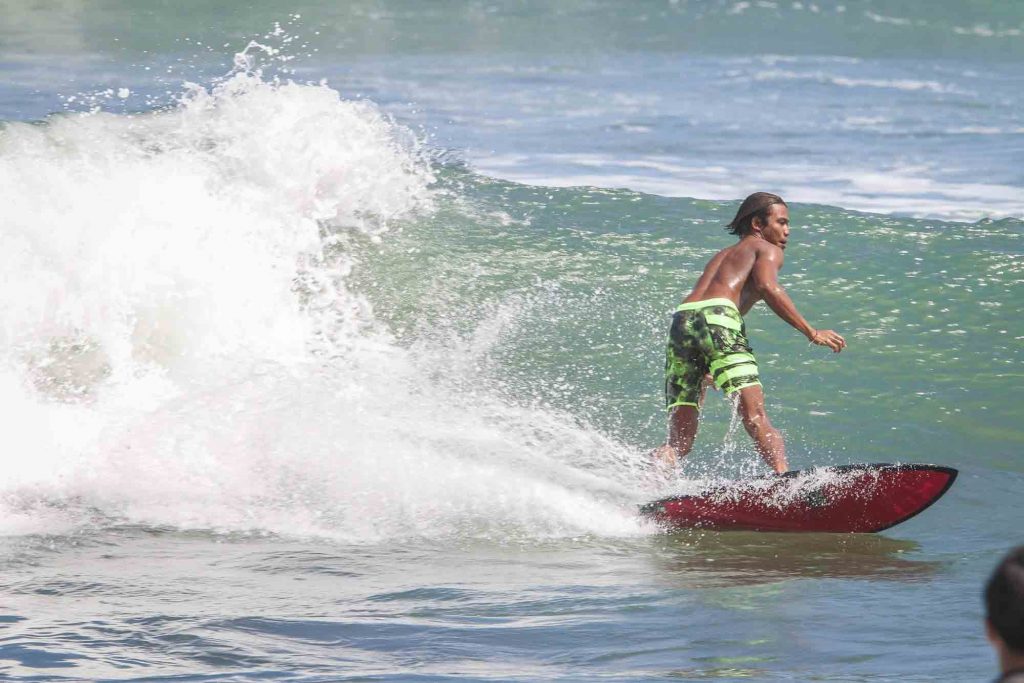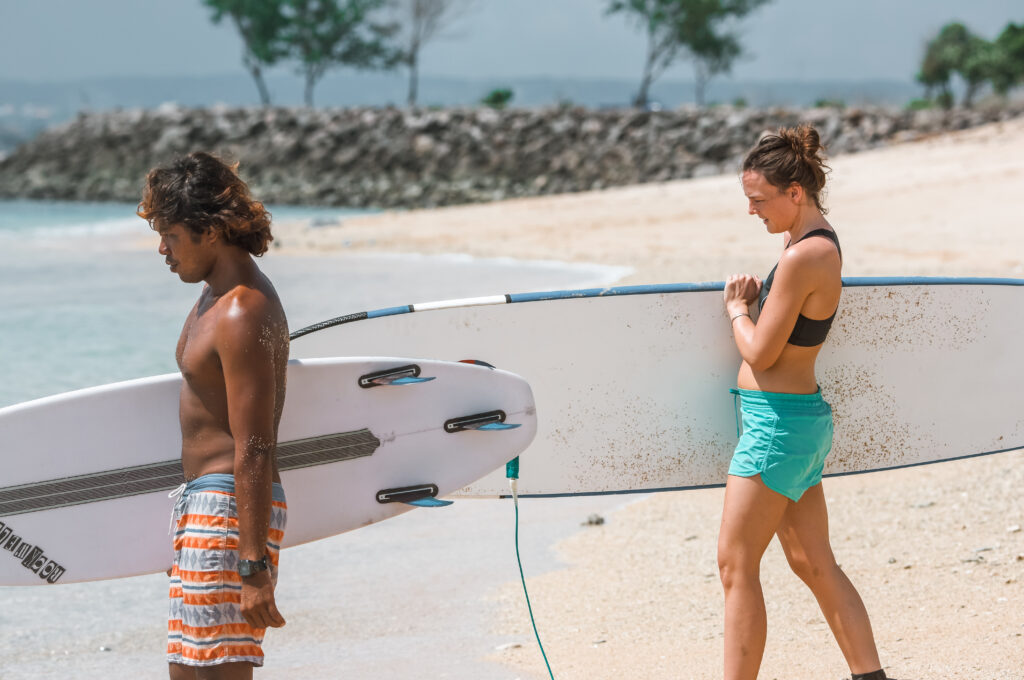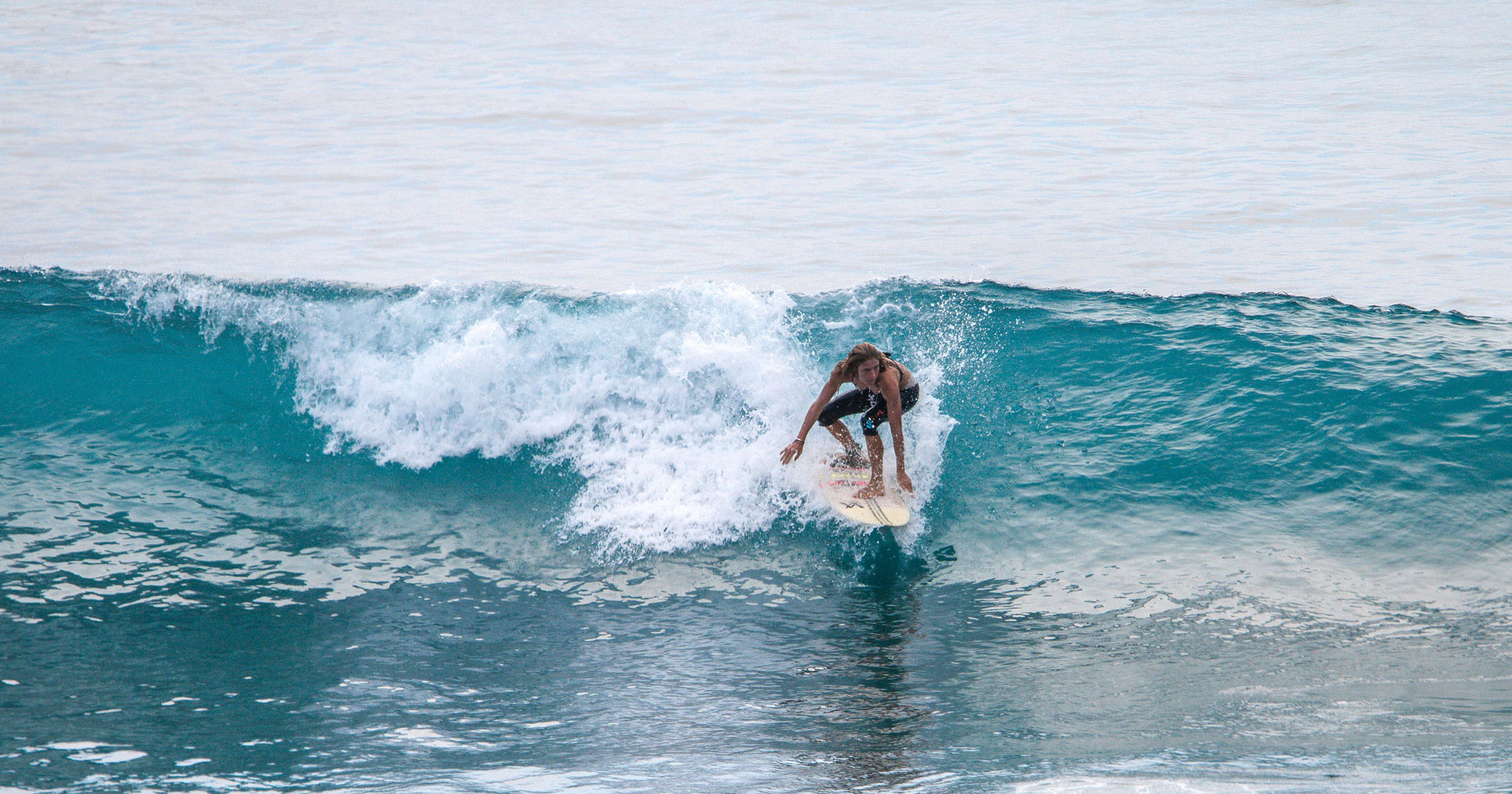Beach Break
The bottom of the ocean is from sand. The wave is created by the shallow sandy bottom. The advantage of surfing a beach break is that you usually don’t have to paddle out too far to get out to the breaking waves. It is the perfect waves to learn how to surf. When you fall from your board, you will just fall on the sand, not on a rock and there is no big shore break.
At Pelan Pelan Bali, we bring our beginner surfers often to a beach break and take them out close to the shore, to catch the white water waves. A beach break is also great for more advanced surfers since the waves are usually more powerful. The more advanced surfers will paddle out a bit further to catch the unbroken green waves.
Point Break
The waves break onto a rocky point. When the conditions are good, a point break can create a very long wave to ride, since the wave is wrapped around a point outside and runs along the the coastline. Point breaks can have rock, coral or sand bottoms.
At Pelan Pelan Bali, we bring our intermediate surfers often to a great point break of the West coast, which has the most beautiful long right hander waves.
Reef Break
The breaks are created by a reef under the water, often coral. They can offer fantastic waves. However, you have to be an experienced surfer to surf a reef, since the reef can create nasty injuries when you fall. Reef breaks often are far out and need a long paddle out to where the waves are breaking, however then they offer you a long wave to ride. Uluwatu on the Bukit area in Bali is well known to be a great reef break wave.

Surfing in Bali is one of the best places to go in the world. Bali has waves the whole year round, for any surf level. Waves can be powerful and unpredictable if you do not know how to read them.
When you want to learn (better) surfing make sure you go with a professional surfer that knows the waves in Bali. It’s important for your own, and others safety in the water.






